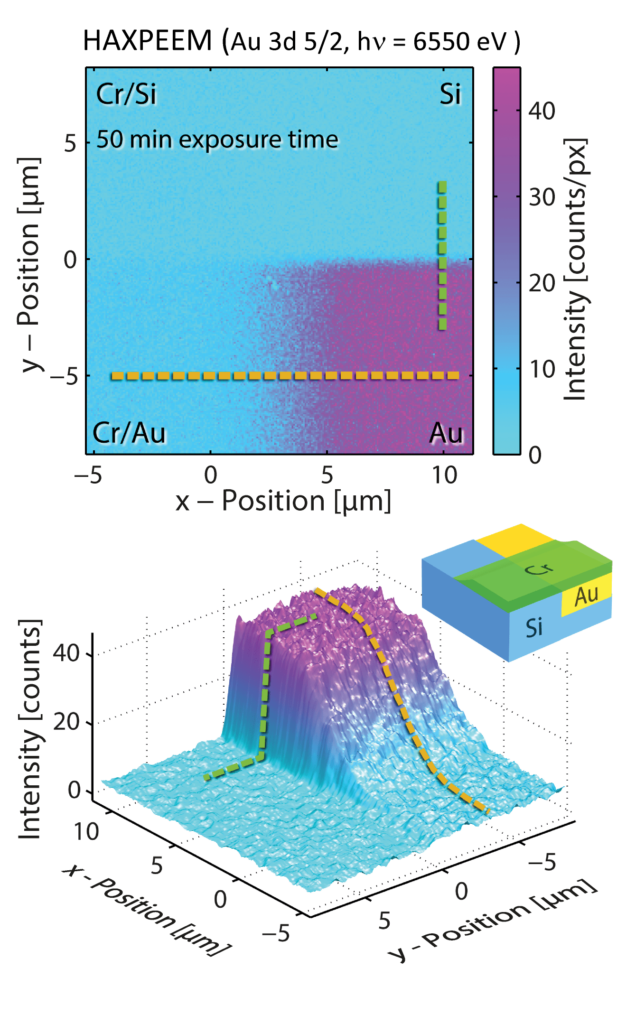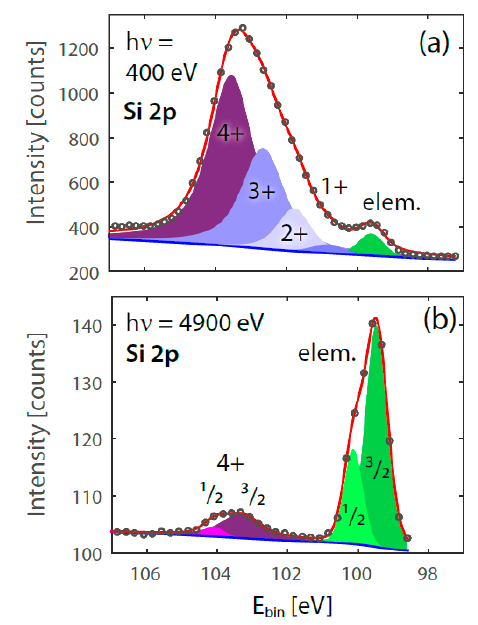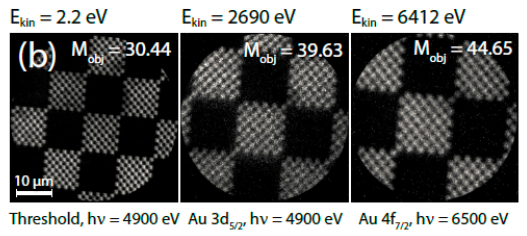Hard x-ray photoelectron spectroscopy (HAXPES) has now matured into a well-established technique as a bulk sensitive probe of the electronic structure due to the larger escape depth of the highly energetic electrons. In order to enable HAXPES studies with high lateral resolution, we have set up a dedicated energy-filtered hard x-ray photoemission electron microscope (HAXPEEM) working with electron kinetic energies up to 10 keV. It is based on the NanoESCA design and also preserves the performance of the instrument in the low and medium energy range. In this way, spectromicroscopy can be performed from threshold to hard x-ray photoemission.
The HAXPEEM approach is of high interest for the study of new material systems and complex device structures like nonvolatile memory cells, spin-transistors, photovoltaic elements or batteries, because it allows a spatial resolved chemical analysis of the used materials (and their electronic intermediate states) even if they are covered by electrodes which are compulsive for the functionality of these devices.


Left: Image spectra were acquired from the same Si sample with soft- and hard-x-ray synchrotron light. The measurements show, how bulk sensitivity is increased with the hard-x-ray approach.
Bottom: Energy-filtered PEEM images were acquired with different excitation energies and different energy-filter settings. The HAXPEEM provides a stable image quality over a wide range of kinetic electron energies.

Ref.: Patt et al., Rev. Sci. Instrum. 85, 113704 (2014)
